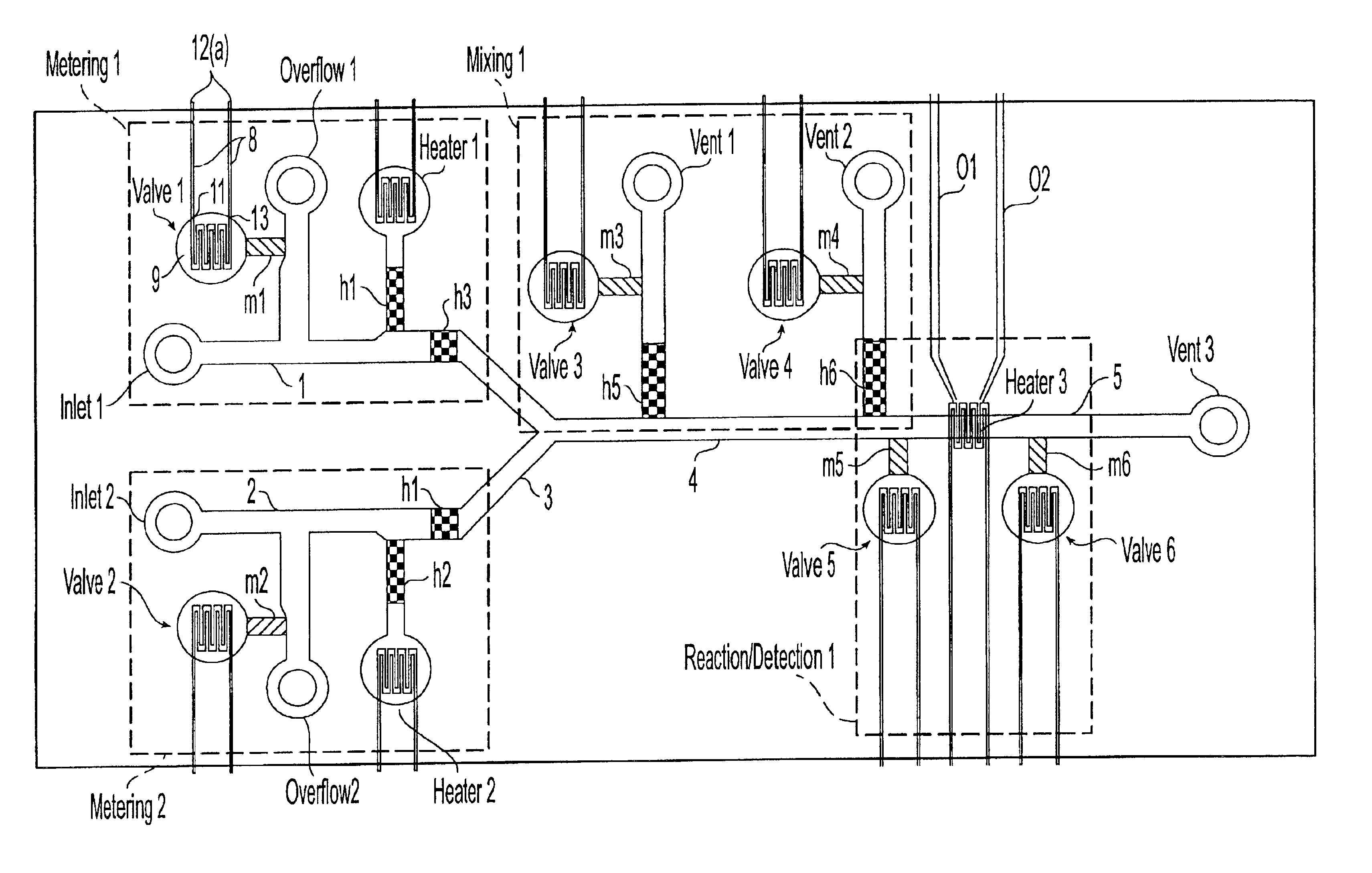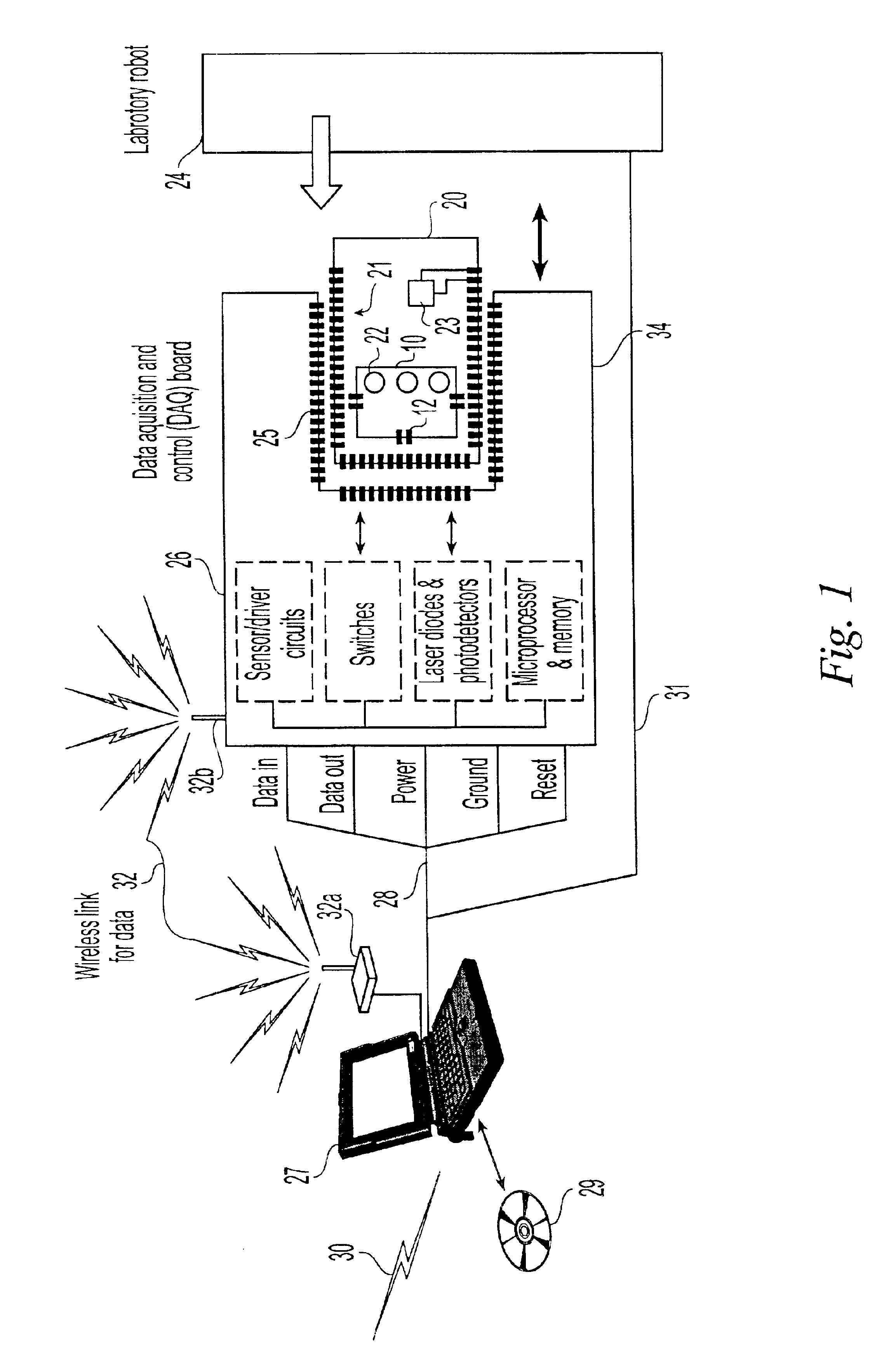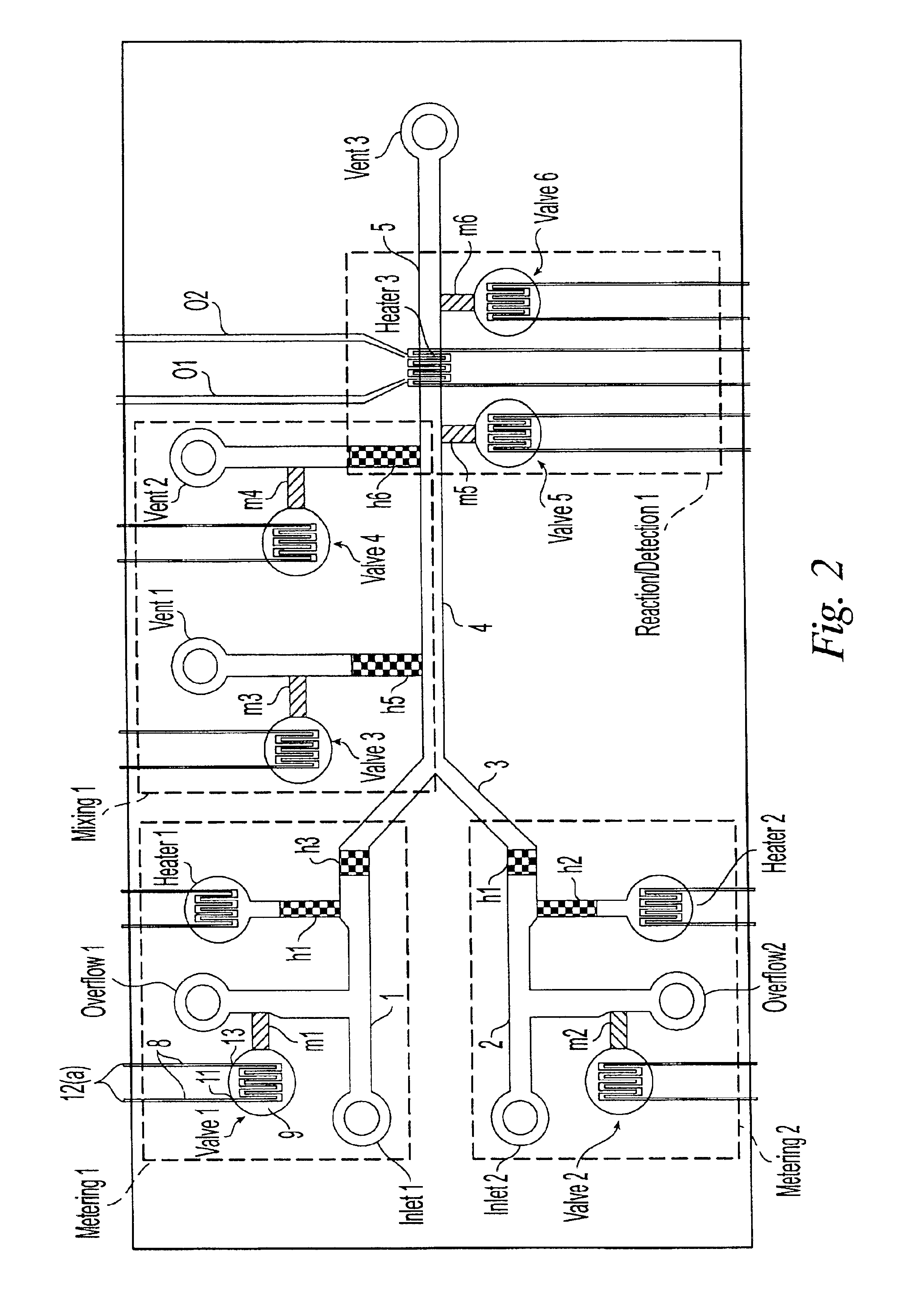Microfluidic devices having a reduced number of input and output connections
a technology of microfluidic devices and input/output connections, applied in flow control, fluid speed measurement, sampled variable control systems, etc., can solve the problem that multi-component devices can be easily assembled into complex, integrated systems, and achieve the effect of reducing the number of input/output connections
- Summary
- Abstract
- Description
- Claims
- Application Information
AI Technical Summary
Benefits of technology
Problems solved by technology
Method used
Image
Examples
Embodiment Construction
System Overview
FIG. 1 depicts a microfluidic processing system that includes a microfluidic substrate 10, a chip carrier cartridge 20, a data acquisition and control board (“DAQ”) 26, and a portable computer 27 such as a laptop or palmtop computer. Microfluidic substrate 10 has microchannels and fluid control elements formed in a solid substrate such as silicon, glass, or other suitable material, preferably microfabricated using conventional photolithographic techniques. The microfluidic substrate 10 is mounted on the chip carrier cartridge 20. The microfluidic substrate 10 has electrical and optical connections 12 with the chip carrier cartridge for carrying electrical and optical signals between the microfluidic substrate and the chip carrier. For example, the electrical connections can be formed with well-known wire bonding techniques. Furthermore, the chip carrier cartridge 20 has electrical and optical contacts 21 for carrying electrical and optical signals between the microflu...
PUM
| Property | Measurement | Unit |
|---|---|---|
| output voltage | aaaaa | aaaaa |
| chemical | aaaaa | aaaaa |
| electrophoretic forces | aaaaa | aaaaa |
Abstract
Description
Claims
Application Information
 Login to View More
Login to View More - R&D
- Intellectual Property
- Life Sciences
- Materials
- Tech Scout
- Unparalleled Data Quality
- Higher Quality Content
- 60% Fewer Hallucinations
Browse by: Latest US Patents, China's latest patents, Technical Efficacy Thesaurus, Application Domain, Technology Topic, Popular Technical Reports.
© 2025 PatSnap. All rights reserved.Legal|Privacy policy|Modern Slavery Act Transparency Statement|Sitemap|About US| Contact US: help@patsnap.com



